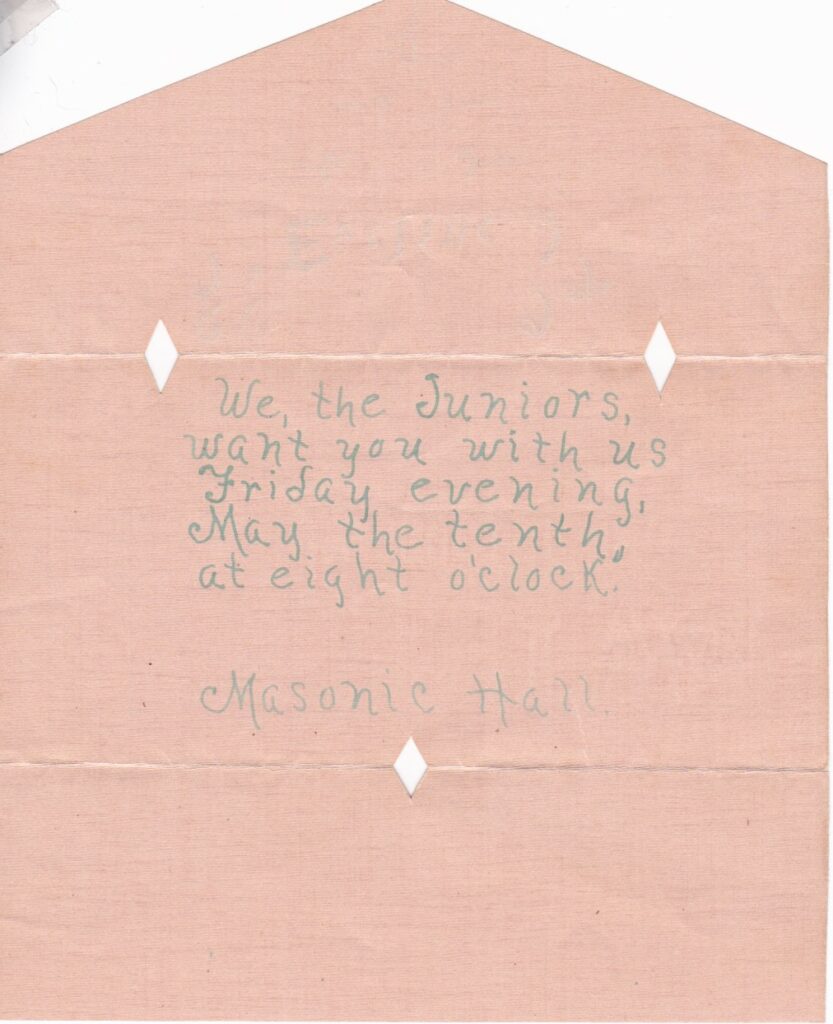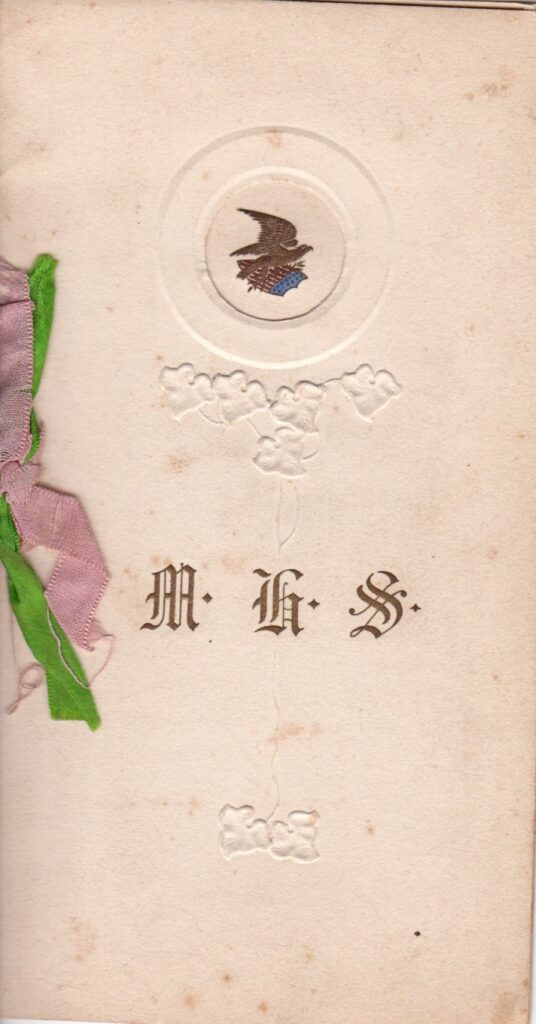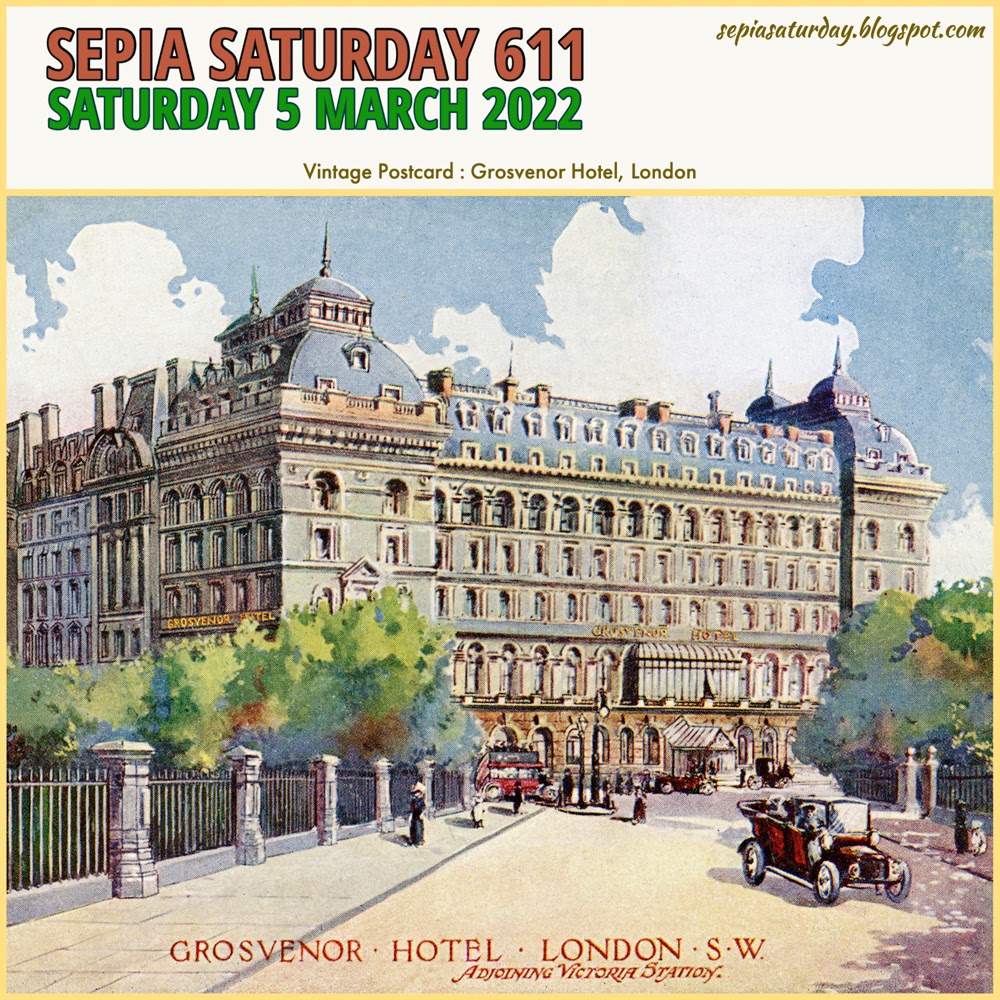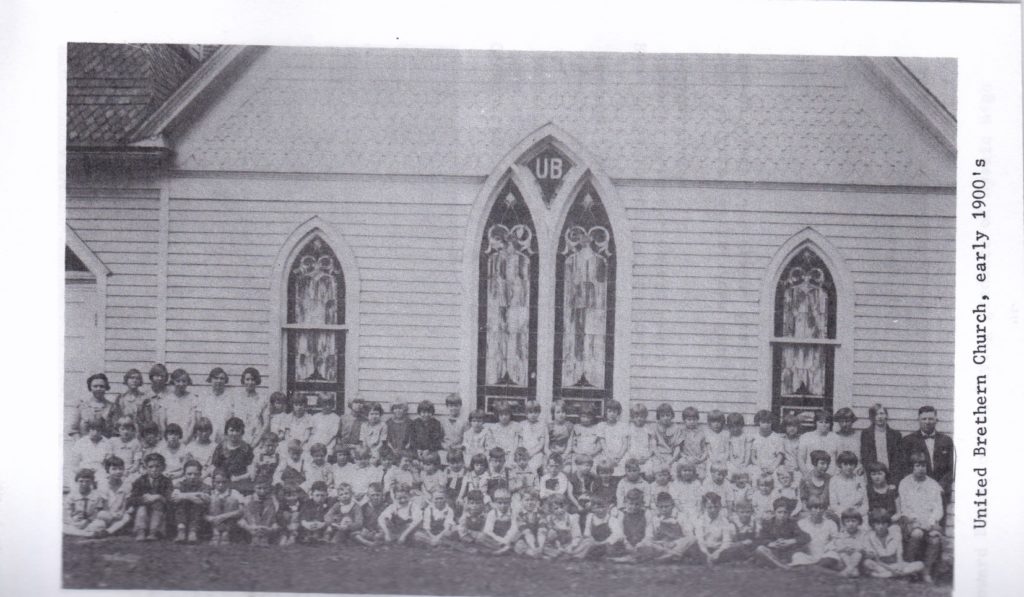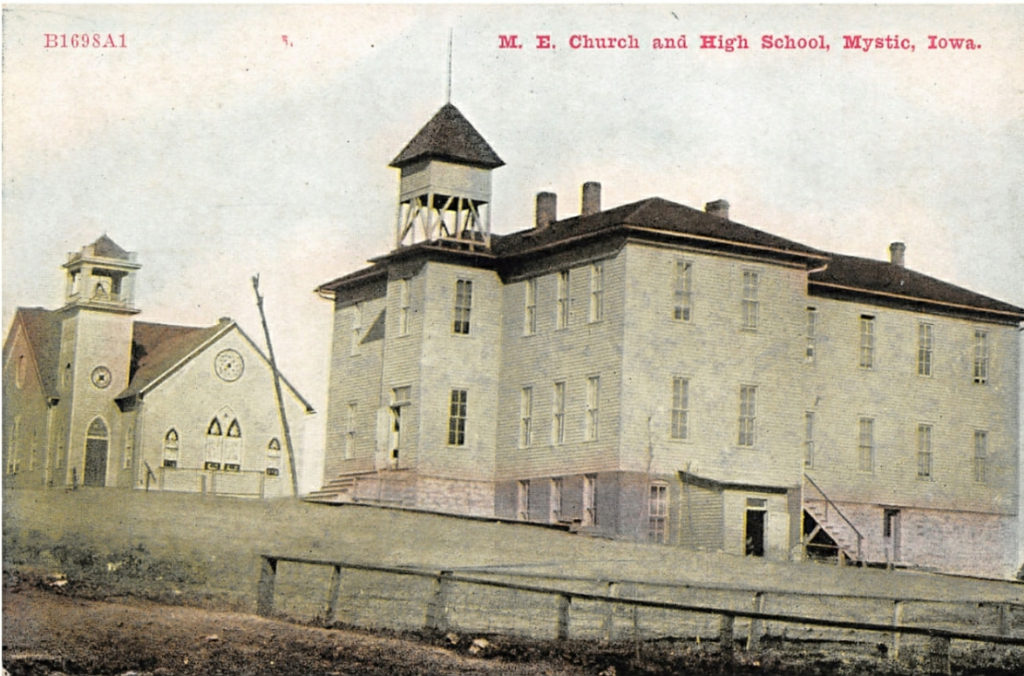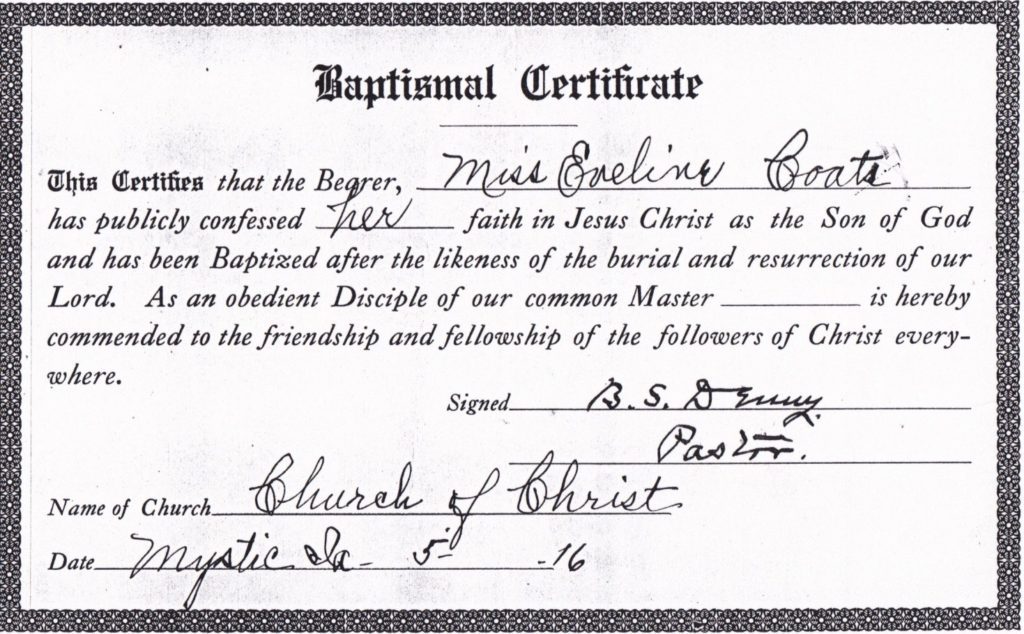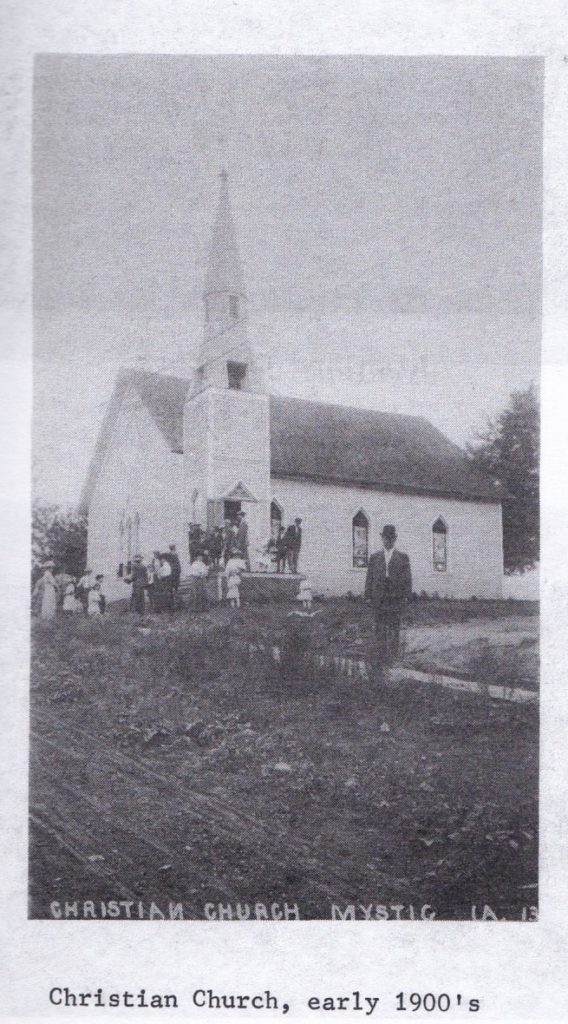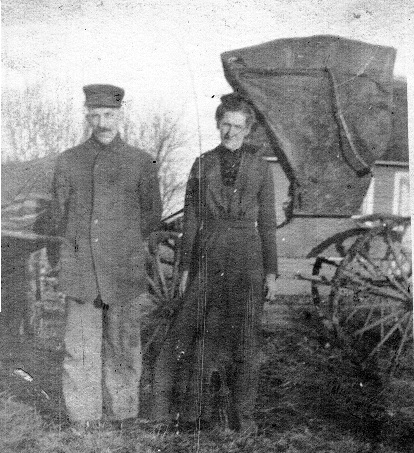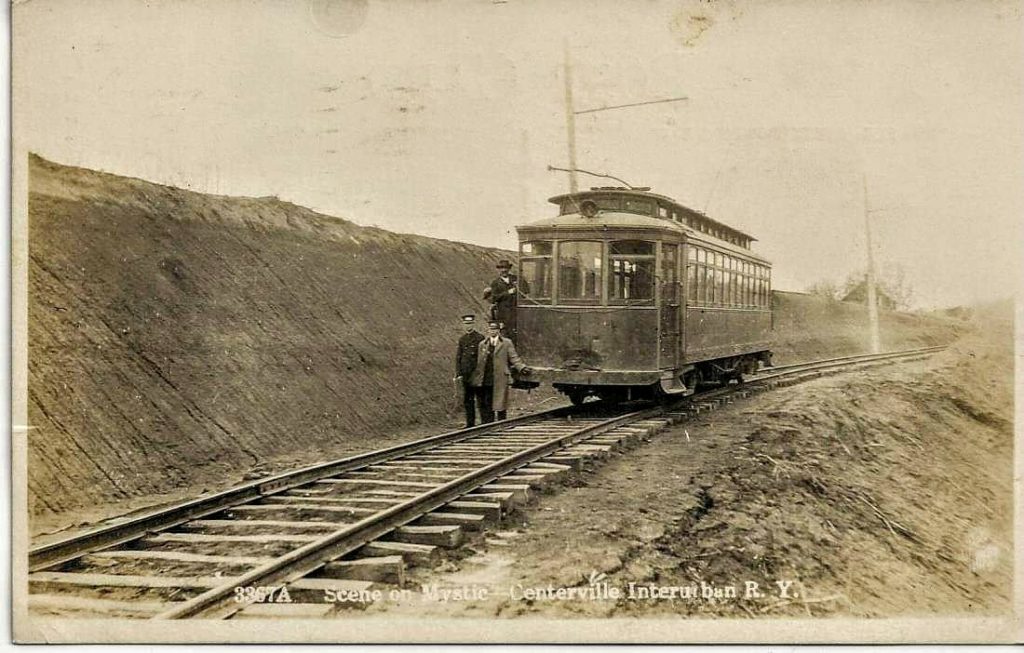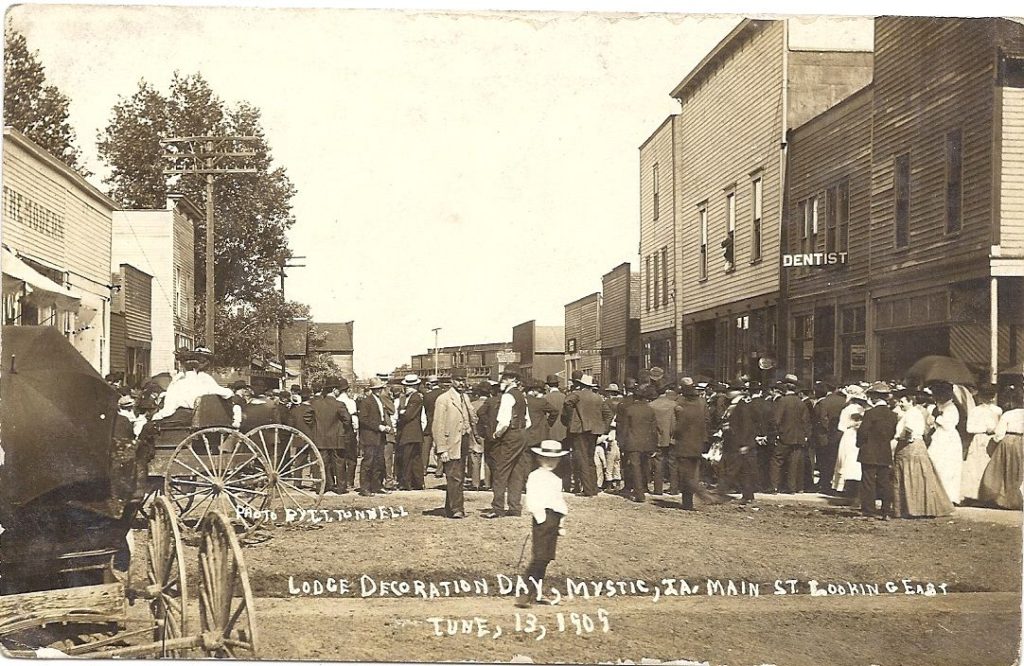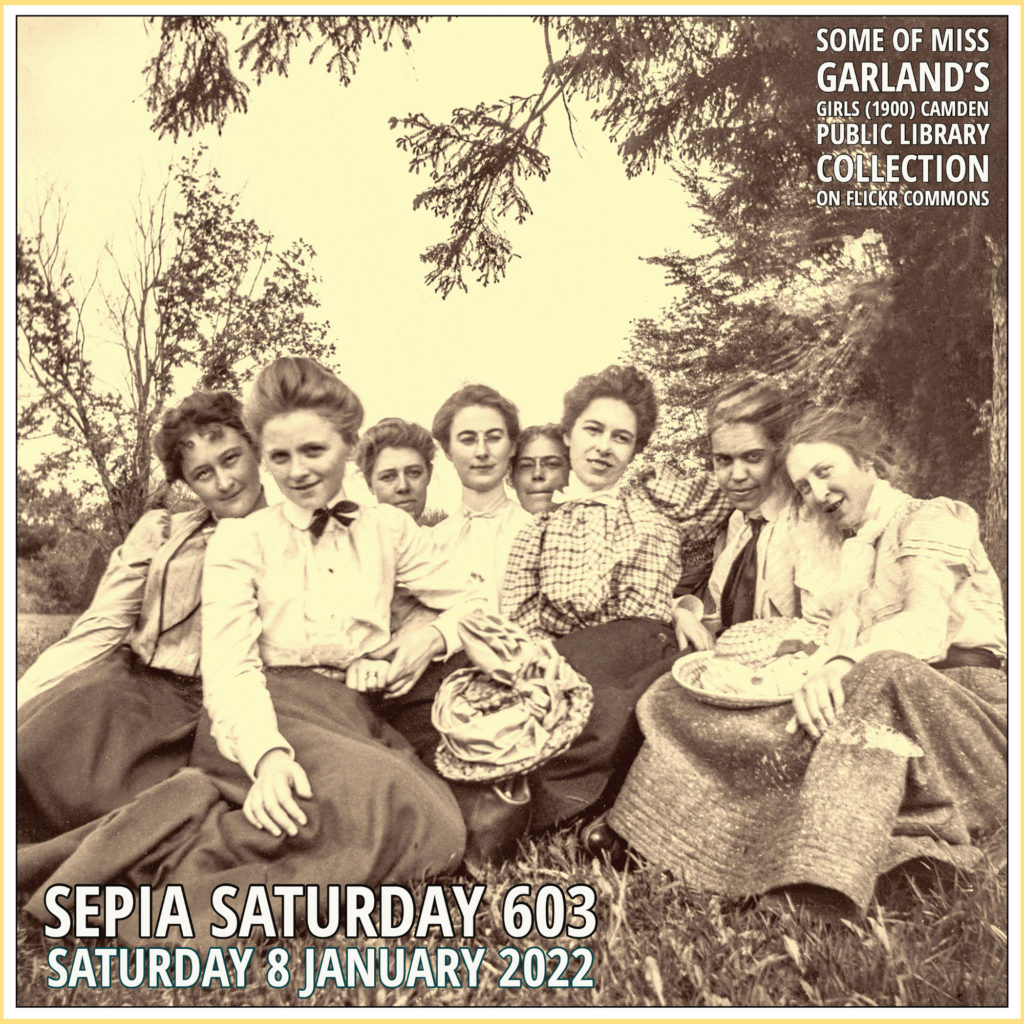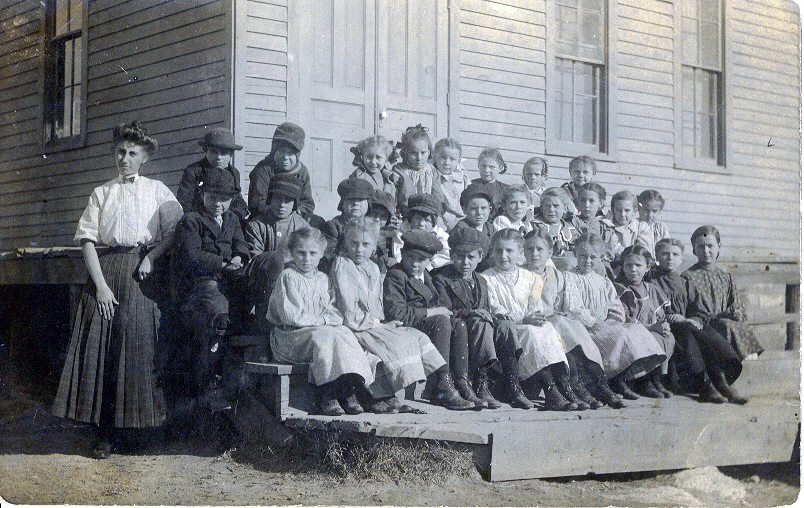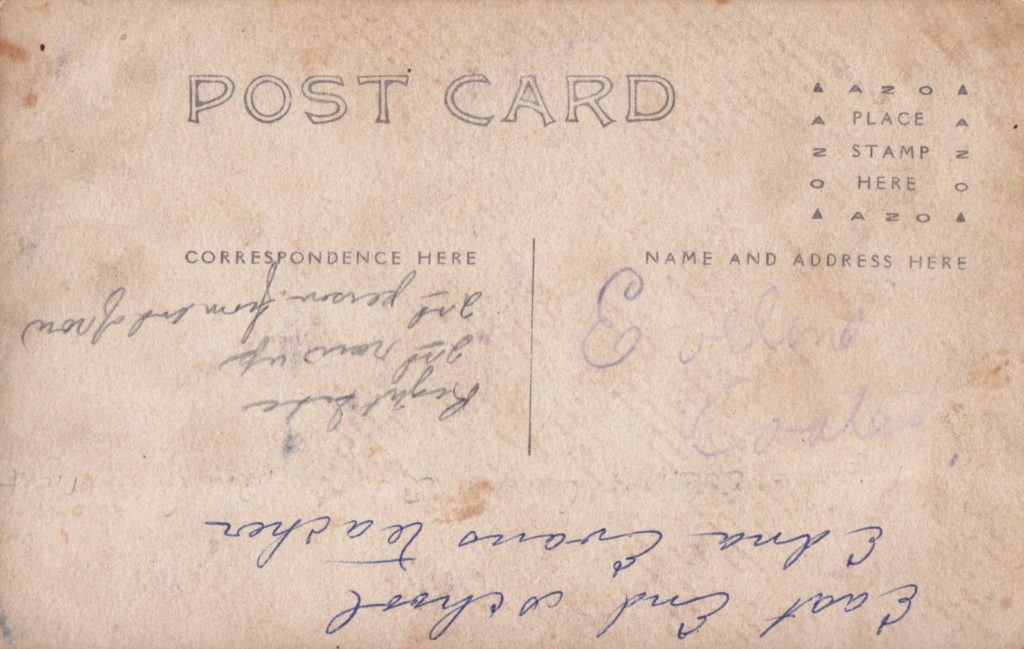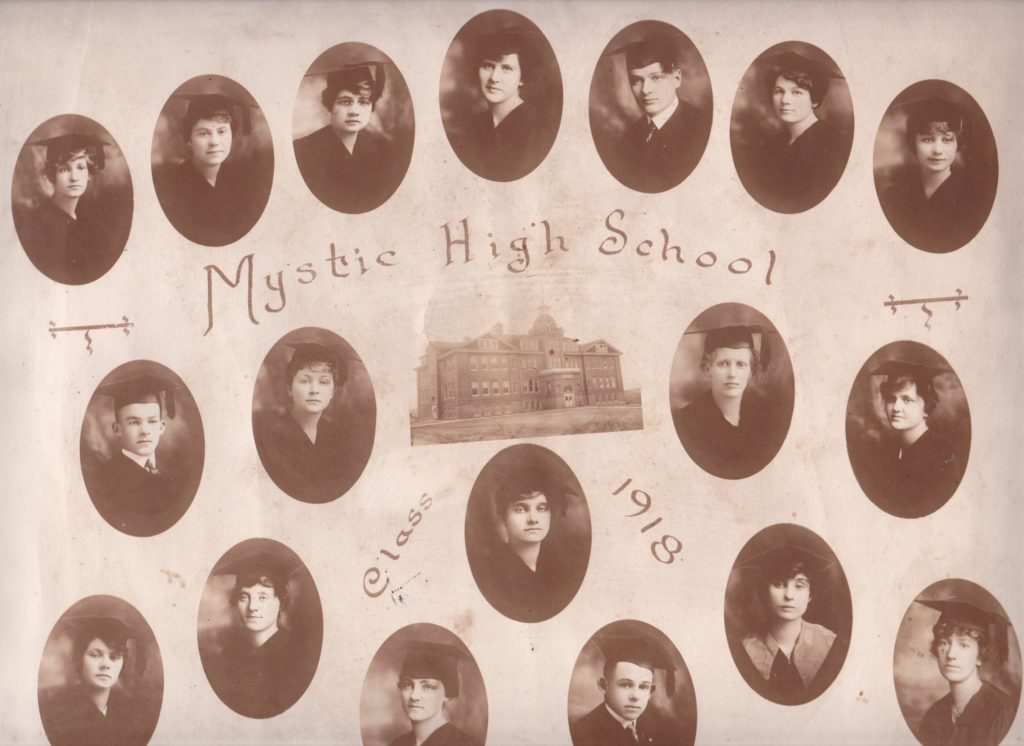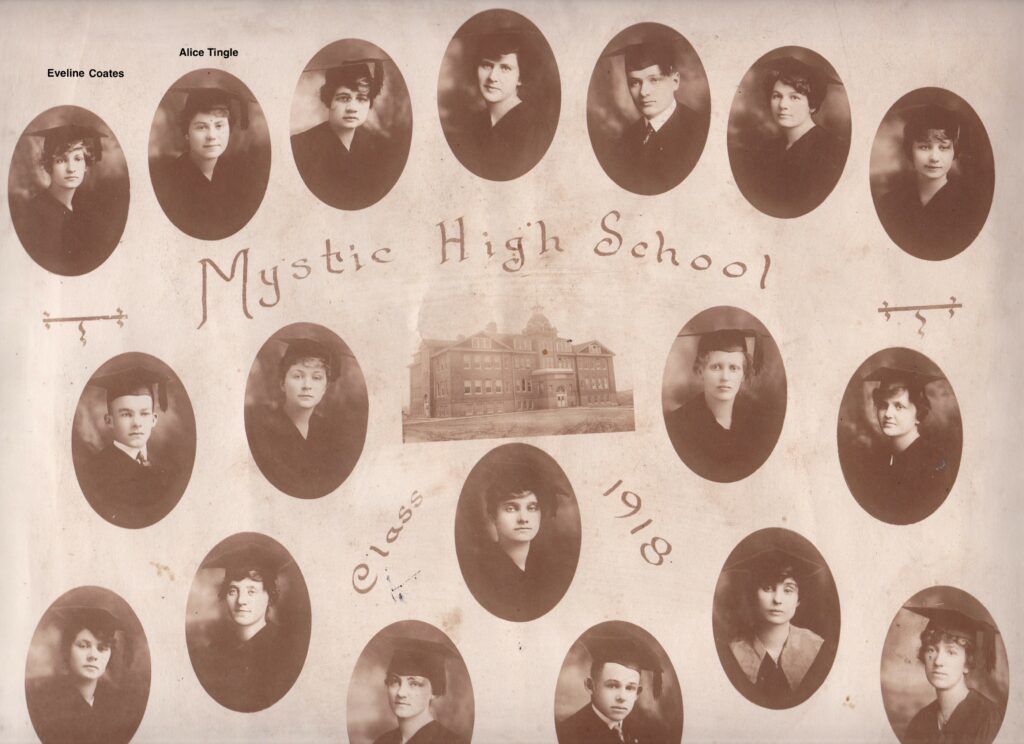
I shared a photo of my grandmother Eveline Coates’ high school graduating class in Mystic, Iowa a few weeks (now months!) ago. Along with the photo and her diploma, a couple of other mementos were saved. One is the program for the Junior-Senior Banquet in honor of the graduating Seniors. It was interesting to see how World War I seemed to be the overarching theme of the festivities. I decided to take a deeper look at what her life may have been like during the 1917-1918 school year. There was a lot going on, a war and the beginning of an influenza pandemic to name the two biggies. The list of related posts is getting long, so I’ll link them at the bottom.
Today I’ll share a few bits of ephemera that remain from Eveline’s senior year in high school.
A picture of the high school

Eveline’s report card
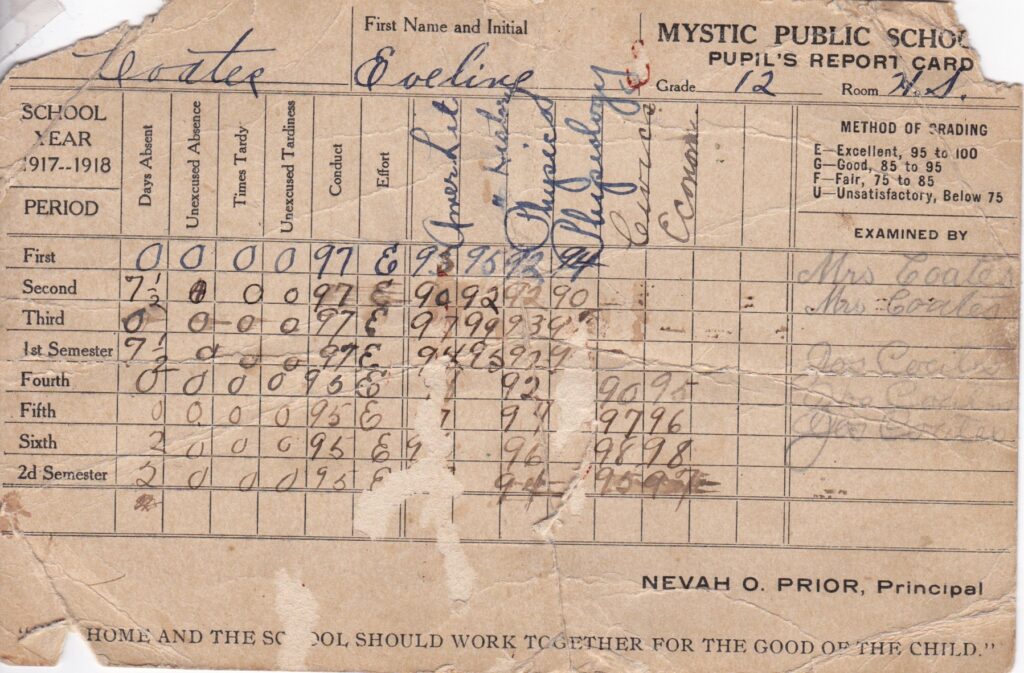
From her report card, we can glean the following information:
Eveline attended Mystic Public Schools.
She was in Grade 12 during the school year 1917-1918.
No room number was provided, just Room H. S. (High School). Does this mean that all high school students were in the same room? I don’t think so? The high school surely housed a number of classrooms.
The principal of the high school was Nevah O. Prior.
Eveline was absent 7 1/2 days during the fall semester, presumably when she had smallpox, and 2 days during the last period of the spring semester. Eveline’s absences were excused.
Eveline was never tardy for school.
Eveline received high marks for conduct – in the high 90s during the fall and just a little less (95) during the spring.
A grade of 95-100 was Excellent. 85-95 was Good.
Eveline earned grades in the 90s in all of her classes.
She studied American Literature and Physics throughout the year.
She studied American History and Physiology during the fall semester.
During the spring semester, she studied Civics, and Economics.
Both of her parents signed her report card.
Another paper saved is this two-fold invitation from the Junior class. The size is about 5×7 inches. The paper is pink and the ink is green. Decorative notches have been cut into the paper.
On May 10, 1918, a Junior-Senior Reception was held at the Masonic Hall in Mystic. It was the program for the reception that prompted me to begin this series.
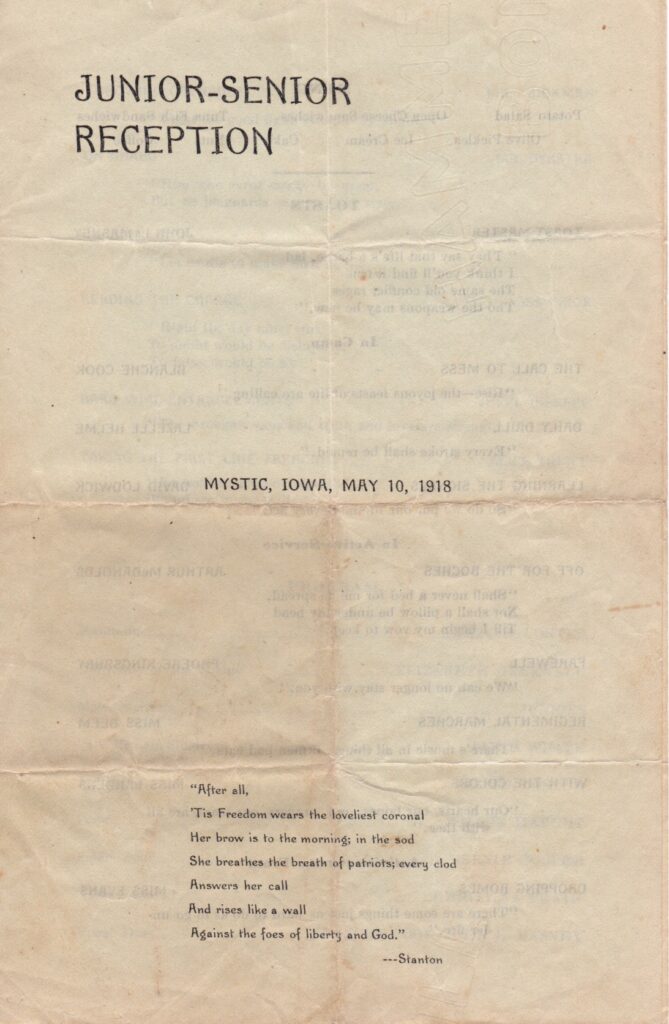
I’m not sure what this hand-drawn card is. It is the size of a calling card. Perhaps it marked Eveline’s place at the table for the reception.

Also saved was the graduation invitation, held together with green and pink ribbons. An eagle atop a shield decorated with stars and stripes can be seen through a cut out in the invitation cover. I believe it is hand colored.
The inside provided details of the commencement exercises.
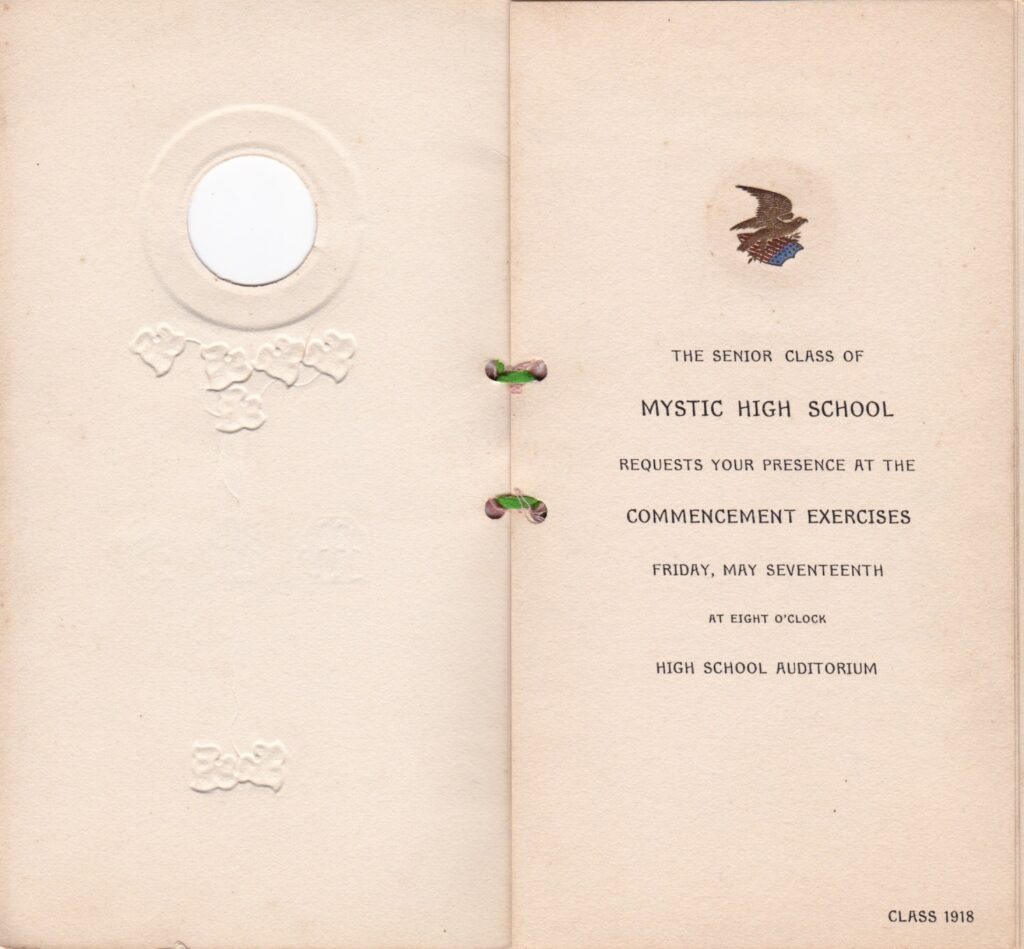
The second page of the graduation invitation lists all of the senior class events leading up to and including commencement.
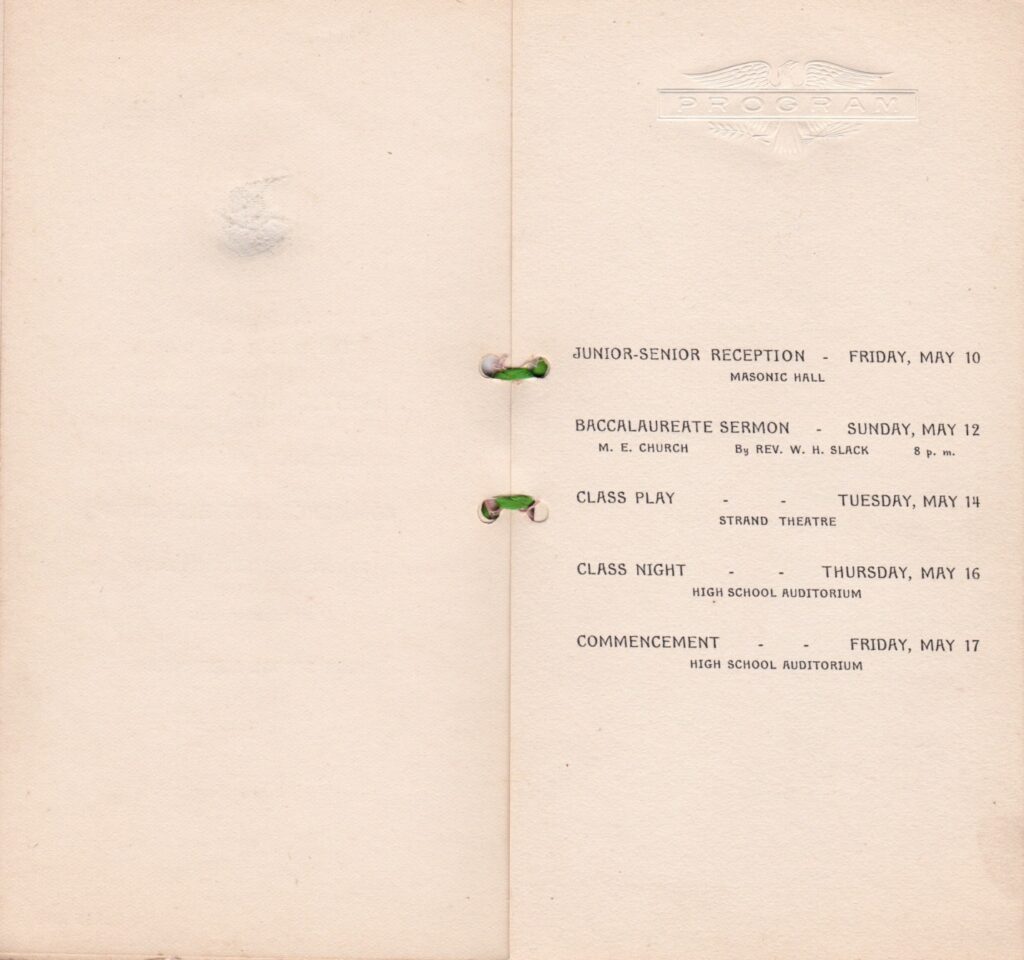
The last page provides information about the class officers, colors, motto, flower, and a list of the graduates. Tucked inside is a graduation name card for Eveline.
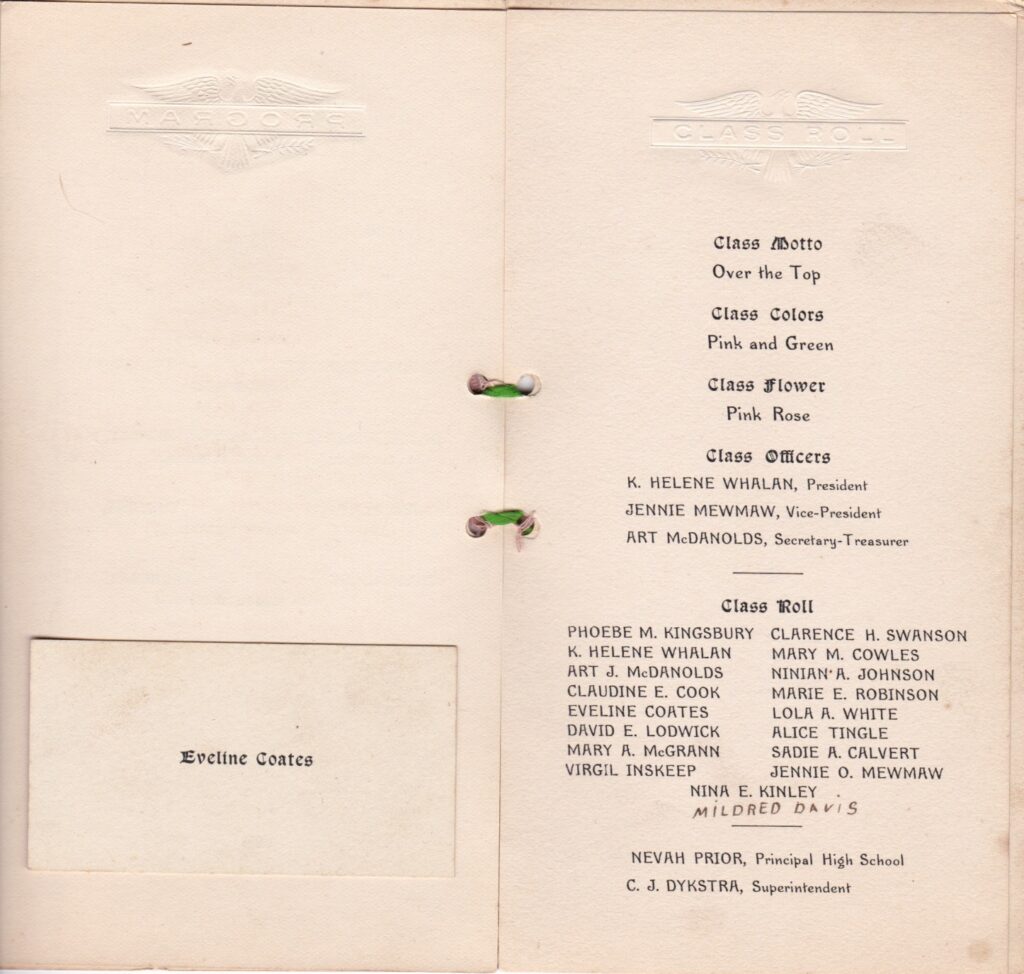
I hope to identify some of the people mentioned in the reception program and Eveline’s class photo. I’m not sure how successful I’ll be. It may be like trying to identify the unknown people in the prompt photo below.
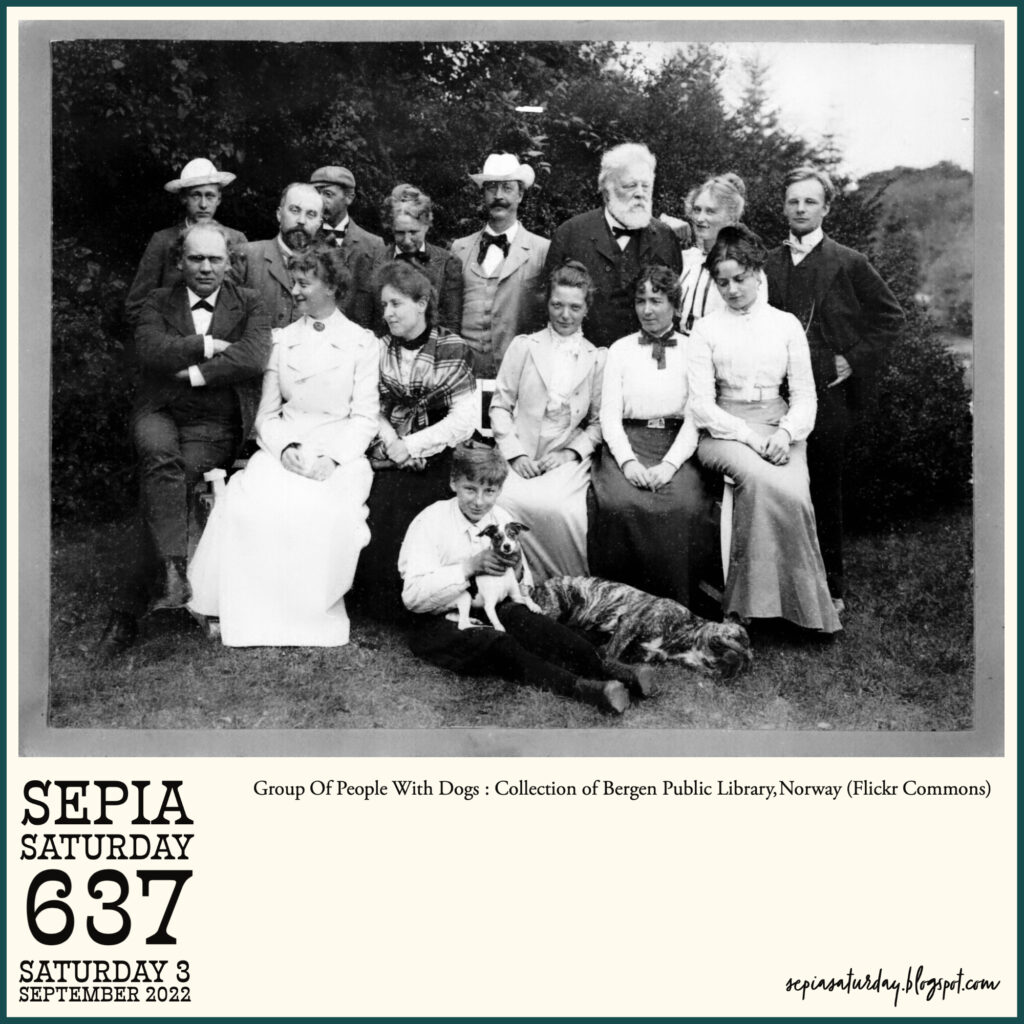
Gather around and bring the dogs while you enjoy posts by others participating in Sepia Saturday.
If you would like to read other posts about Eveline’s Senior Year, you can find them here:
Eveline’s Senior Year, Part 1
Eveline’s Senior Year: The Draft and a Carnival
Eveline’s Senior Year: A Look Around Town
Eveline’s Senior Year: Musical Notes
Eveline’s Senior Year: Smallpox
Eveline’s Senior Year: What are you Serving?
Eveline’s Senior Year: Root Beer on the 4th
Eveline’s Senior Year: Miners, Miner and Maps
Eveline’s Senior Year: The Weight of Mining
Eveline’s Senior Year: Gatherings and Gossip
Eveline’s Senior Year: Knit Your Bit
Eveline’s Senior Year: In Search of a Back Story
Eveline’s Senior Year: Sign the Food Pledge
Eveline’s Senior Year: Produce, Preserve, Conserve


